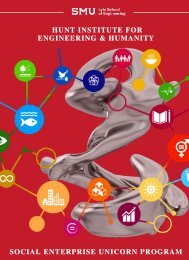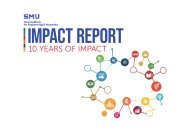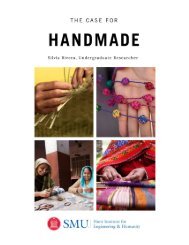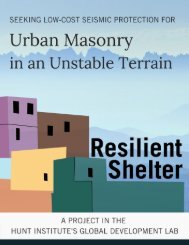Bridging the Gap in Diagnostics
Traditionally, biomedical engineers have developed technologies in response to the needs of the developed world’s medical community. These approaches often do not address the needs of the majority of the world’s peoples afflicted with both communicable and non-communicable diseases as the developments are far too costly and those with most need have, at best, limited access to supporting clinical laboratory infrastructure in developing countries. A gap in care has emerged as a result of these conditions. As a result, Drs. Beskok and Koklu have developed a Lab on a Chip technology that can test for a chosen disease with a turnaround time of just a few seconds and a detection limit of 1 ng of antigen per 1 mL of sample fluid. This is a great improvement to current devices on the market and is particularly useful in high-throughput, low-skill staffing environments. This report researched and authored by an interdisciplinary group of undergraduate students at the Southern Methodist University working in the Hunt Institute aims to address the areas of greatest need in response to UNSDG #3 "to ensure healthy lives and promote wellbeing for all at all ages."
Traditionally, biomedical engineers have developed technologies in response to the needs of the developed world’s medical community. These approaches often do not address the needs of the majority of the world’s peoples afflicted with both communicable and non-communicable diseases as the developments are far too costly and those with most need have, at best, limited access to supporting clinical laboratory infrastructure in developing countries. A gap in care has emerged as a result of these conditions. As a result, Drs. Beskok and Koklu have developed a Lab on a Chip technology that can test for a chosen disease with a turnaround time of just a few seconds and a detection limit of 1 ng of antigen per 1 mL of sample fluid. This is a great improvement to current devices on the market and is particularly useful in high-throughput, low-skill staffing environments. This report researched and authored by an interdisciplinary group of undergraduate students at the Southern Methodist University working in the Hunt Institute aims to address the areas of greatest need in response to UNSDG #3 "to ensure healthy lives and promote wellbeing for all at all ages."
Create successful ePaper yourself
Turn your PDF publications into a flip-book with our unique Google optimized e-Paper software.
Figure 7: Graphic of compared funding from 2018 TAG report on 2005-2017 on Tuberculosis funding 20
The largest funder of TB world-wide has remained the National Institute of Health (NIH)
and the National Institute of Allergy and Infectious Diseases (NIAID) under the NIH. With
continued bipartisan support for the NIH and increased allocation over the years, support by the
NIH to TB funding is not expected to drop. 21 In total, the United States remains the top funder of
TB research globally at $312 million, followed by the Bill and Melinda Gates Foundation - the
top philanthropic giver - at $126 million, and in third place the European Union, at $37 million.
It is important to note, as a U.S. research initiative, the two top funding resources globally reside
in the U.S. In 2017, 66% of funding has come from the public sector, with the private sector
coming in at 11%. 21
The TAG report also makes mention of the investment group, Unitaid. 20 Unitaid is
focused on investing in innovations to prevent, diagnose and treat HIV/AIDS, tuberculosis and
malaria more quickly, affordably and effectively.” 22
Within funding for diagnostics, the best areas to seek grant opportunities are from either
public/government funding or the Bill and Melinda Gates foundation or Unitaid. The U.S.
remains a global leader in TB funding support and research.
25














